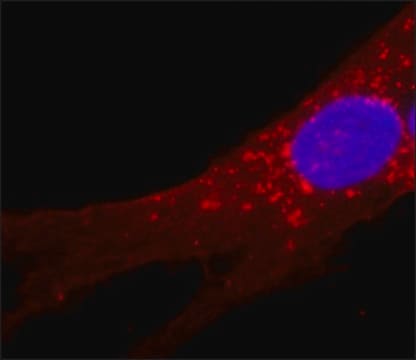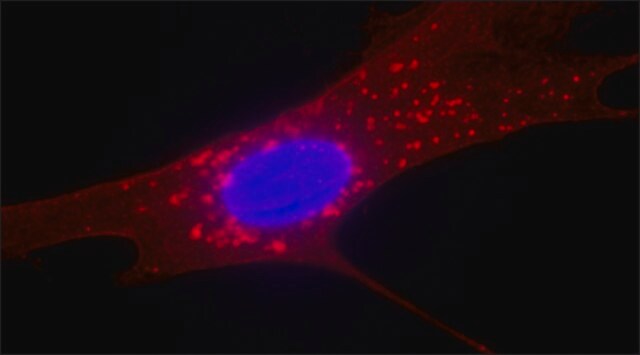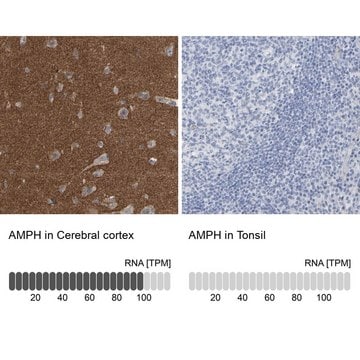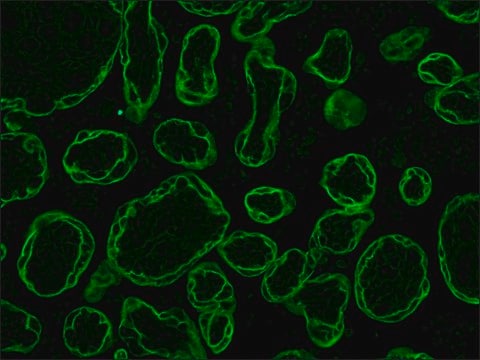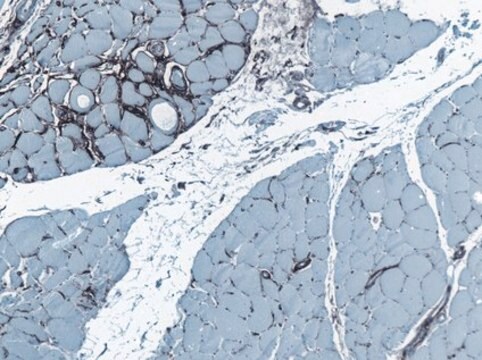F4772
Monoclonal Anti-Cytokeratin Peptide 18−FITC antibody produced in mouse
clone CY-90, purified immunoglobulin, buffered aqueous solution
Sinônimo(s):
Monoclonal Anti-Cytokeratin Peptide 18
Selecione um tamanho
Selecione um tamanho
About This Item
Produtos recomendados
fonte biológica
mouse
Nível de qualidade
conjugado
FITC conjugate
forma do anticorpo
purified immunoglobulin
tipo de produto de anticorpo
primary antibodies
clone
CY-90, monoclonal
Formulário
buffered aqueous solution
reatividade de espécies
wide range
técnica(s)
direct immunofluorescence: 1:100 using formalin-fixed, paraffin-embedded sections of human or animal tissues
immunohistochemistry (formalin-fixed, paraffin-embedded sections): suitable
Isotipo
IgG1
Condições de expedição
dry ice
temperatura de armazenamento
−20°C
modificação pós-traducional do alvo
unmodified
Informações sobre genes
human ... KRT18(3875) , KRT18(3875)
Procurando produtos similares? Visita Guia de comparação de produtos
Descrição geral
Imunogênio
Aplicação
- direct immunofluorescent staining
- immunohistochemistry
- double immunofluorescence
- immunocytochemical and immuno?electron microscopic localization of keratins
- is suitable for immunohistochemistry to identify renal tubular epithelial cells in the extrarenal cells regeneration during acute renal failure
- is suitable for immunocytochemical and immuno-electron microscopic localisation of keratins in human materno-foetal interaction zone
- may be used for single or double labeling procedures
Ações bioquímicas/fisiológicas
forma física
Exoneração de responsabilidade

Não está encontrando o produto certo?
Experimente o nosso Ferramenta de seleção de produtos.
Código de classe de armazenamento
10 - Combustible liquids
Ponto de fulgor (°F)
Not applicable
Ponto de fulgor (°C)
Not applicable
Escolha uma das versões mais recentes:
Certificados de análise (COA)
Não está vendo a versão correta?
Se precisar de uma versão específica, você pode procurar um certificado específico pelo número do lote ou da remessa.
Já possui este produto?
Encontre a documentação dos produtos que você adquiriu recentemente na biblioteca de documentos.
Active Filters
Nossa equipe de cientistas tem experiência em todas as áreas de pesquisa, incluindo Life Sciences, ciência de materiais, síntese química, cromatografia, química analítica e muitas outras.
Entre em contato com a assistência técnica
